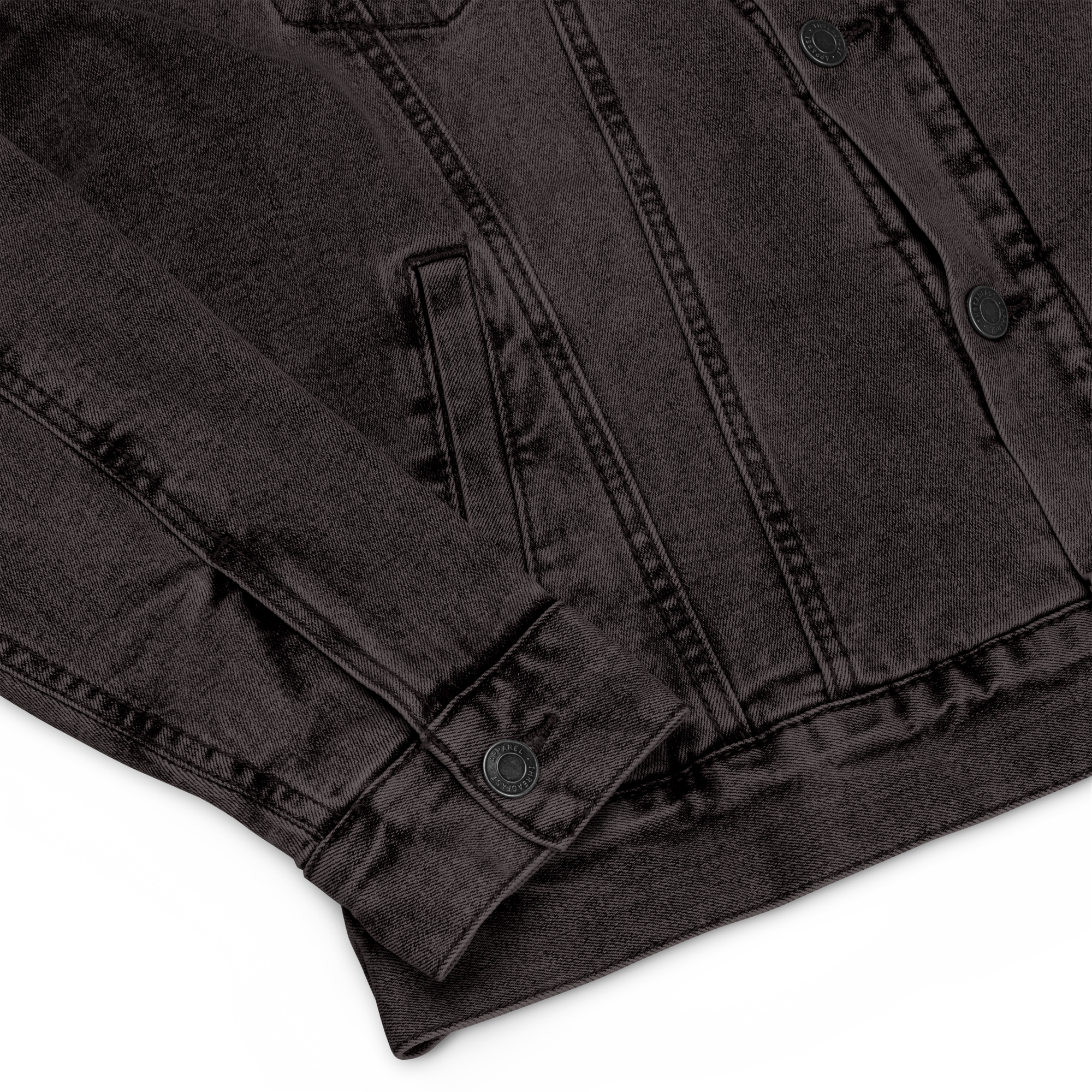






Jacket - The Moth - 90s Vintage Denim
Tax included. Shipping calculated at checkout
CARE INSTRUCTIONS
Whether a pair of Denim Shorts, Black High Rise Skinny Jeans, Distressed Straight Leg Jeans, Mom Jeans or a Denim Jacket, Canvas Apparel we want our favorite denim staple to be with us for as long as possible.
Denim is more an investment, an item of clothing that forms the foundation of every wardrobe. Whilst there is an abundance of conflicting information on how to care for your denim, we’ve narrowed it down to just three simple steps:
Wearing:
When putting on your favorite pair of jeans or denim shorts, never use the belt loops to adjust their position. Always pull your jeans up by the waistband, a much stronger part of the garment that won’t tear when tugged.
We use premium zips on all our denim garments. Possessing a high-tech locking mechanism, which ensure you don’t get caught mid convo with your undergarment exposed. The zip rests in it’s locked position when the pull lays flush up or down, against the teeth of the zip. To be able to zip, or un-zip your jeans, you must ensure the zip pull is facing upright, enabling you to grasp it with your fingers.
If you have a predisposition to wearing distressed denim, this one’s for you; While distressed areas on your jeans are designed to grow with wear, please do take care when you’re putting them on or off.
Our signature distressed details, while very charming and chic, are exactly the perfect size for a foot to slip through. Please take care when dressing into your distressed jeans, to avoid exaggerated, premature, ripping.
Washing:
Let us preface the next stage of denim care with the following; yes it is okay for you to wash your jeans. They are, for the most part, made from cotton, a very robust fibre which will survive the conventional washing machine. This being said, limiting the amount of unnecessary washes you put your denim garment through will help prolong it’s life. Here, when possible, less is more.
Don’t be afraid to wash your denim if washing is what is required. However, spot cleaning when possible is a great way of keeping a pair of jeans looking fresh while avoiding unnecessary washing cycles. It’s also a great way to reduce your eco footprint and water usage.
When the time comes to wash your denim there are a few rules to go by;
Turn your garment inside out:
Turn your garment inside out before placing it in the washing machine. This will reduce the harshness of the detergent to the surface area, and also make sure you check pockets for anything foreign you don’t want your jeans to be washed with (tissues are a regular culprit).
Wash in cool or cold water:
In order to best retain your denim’s original color, shape and longevity, wash in cool or cold water, with a minimal amount of detergent. Best practice is to use something in liquid form, rather than powder. Powered detergent can sometimes create unwanted white markings on heavy fabrics. Whichever detergent you decide upon, less is more is rule of thumb. A small amount, perhaps a few tablespoons, should do the trick.
Wash with similar colors:
Not unlike your other non-denim garments, denim likes to be washed with similar colors, even when opting for the cold cycle. Color may bleed for the first few washing cycles and we want to avoid color migration where possible. It’s also a great idea to wash any darker colored denim, deep indigo jeans especially, prior to wearing it for the first time.
Wash white denim alone:
If you’re a white denim aficionado, wash white denim separately, or with other whites. When washing, avoid bleach at all costs. Bleach is a harsh chemical that may react badly with your garment and affect it’s performance. Soaking in detergent is a good way of removing stains.
Handwashing is recommended:
Handwashing can be another substitute to using a washing cycles worth of energy and water. Hand washing is also a less vigorous way of handling your denim garment, which will also prolong it’s life.
Place your inside out denim garments in a sink or bucket, submerged fully in cold/cool water. Apply a small amount of liquid detergent, then proceed to agitate the water to ensure the jeans are getting washed between every fold. Leave them to soak for anywhere between 15-30 minutes. Now- RINSE!
Don’t forget to rinse well to make sure all detergent is removed; three times should suffice. Roll them to remove excess water, avoid wringing as it will twist and break the fibres.
Drying:
Once your denim garment is clean, it’s ready for drying.
Tumble dryers are the enemy here. Exposing your garments to lengthy periods of heat will damage the fibres, shrink your jeans and speed up the ageing process. Tumble dryers require large amounts of power in order to operate. Reduce your carbon footprint and power bill by opting for a natural drying method.
To dry, shake denim out after pulling them from the washer/sink, flattening out creases in the process.
Lay the garments out to dry, flat and in the shade. Sunlight may distort color and deteriorate your jean. Drying your jeans naturally will cause them to be a little stiff at first, it will only take a short time of wear for them to revert to their normal softness.
Softening can also be obtained by steaming or ironing the garment inside out.
Choose options








